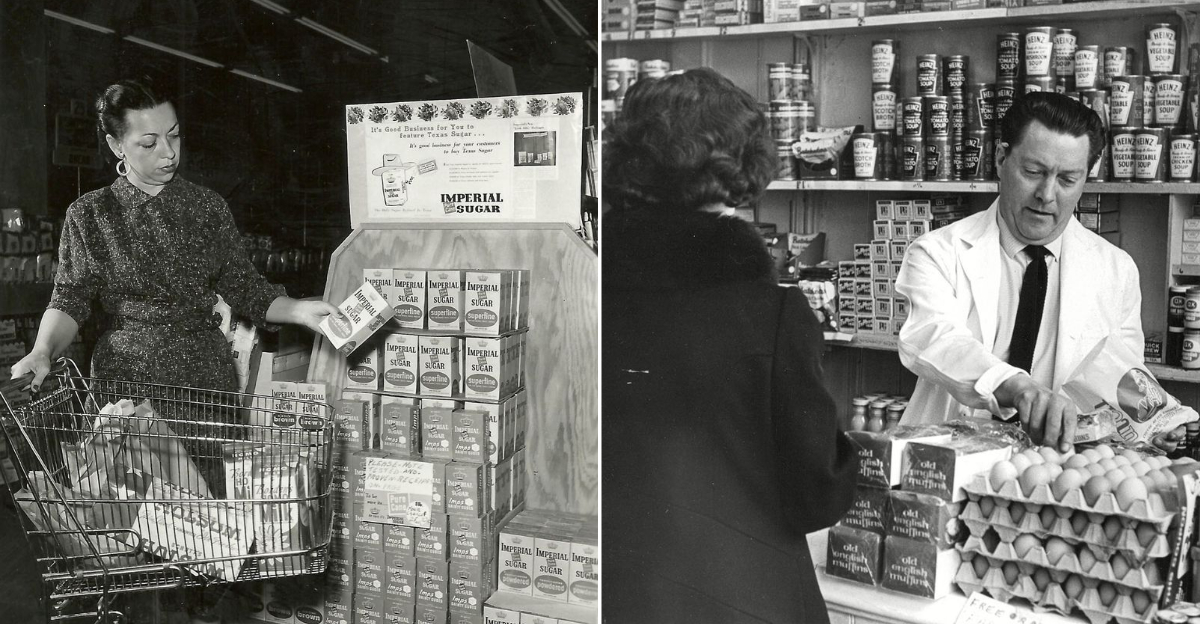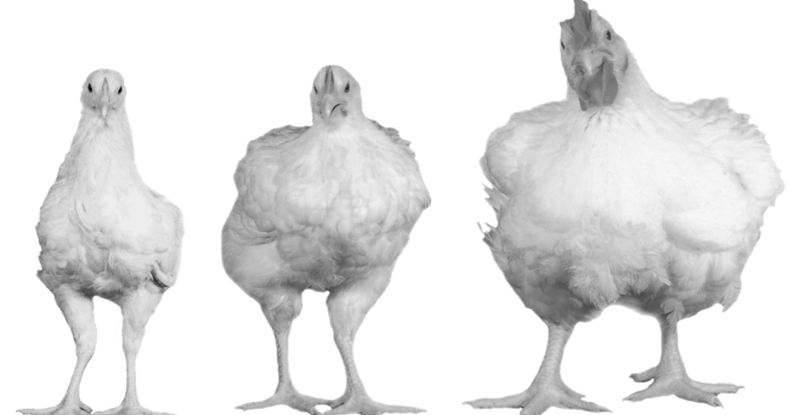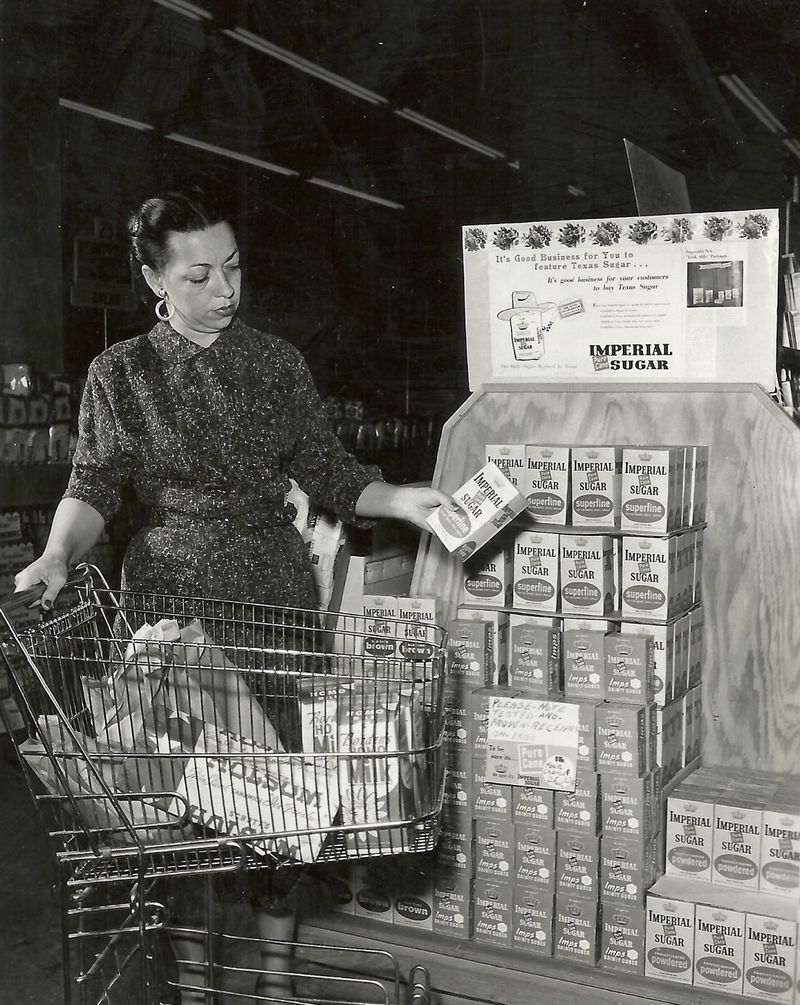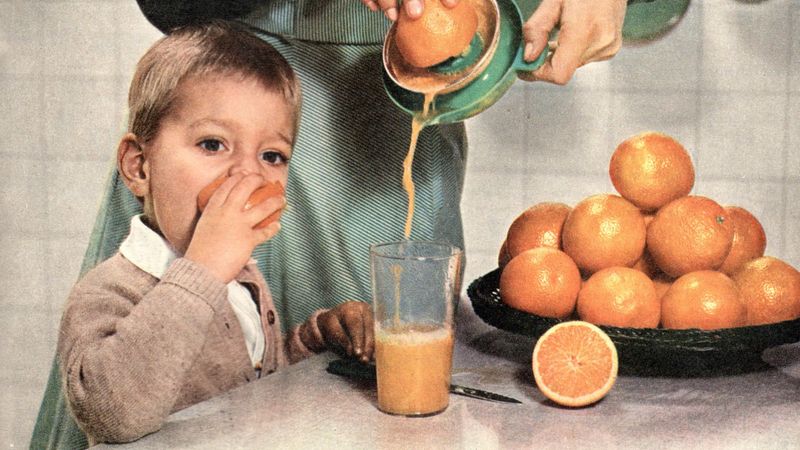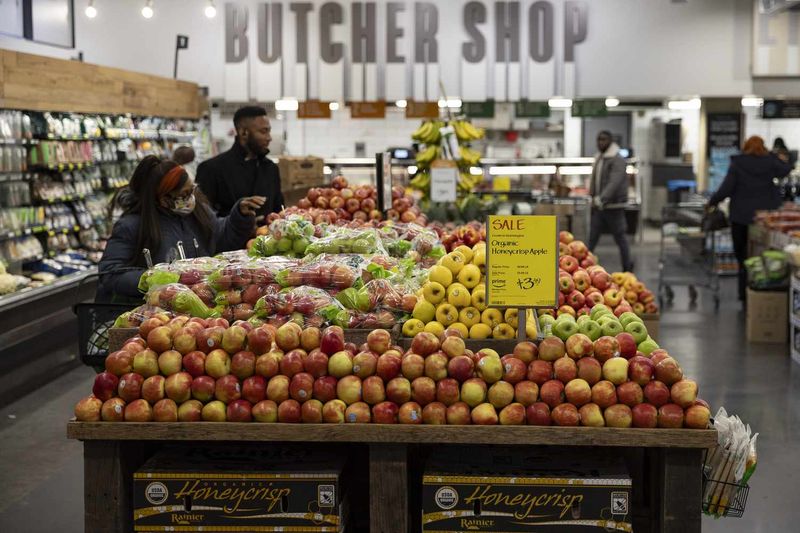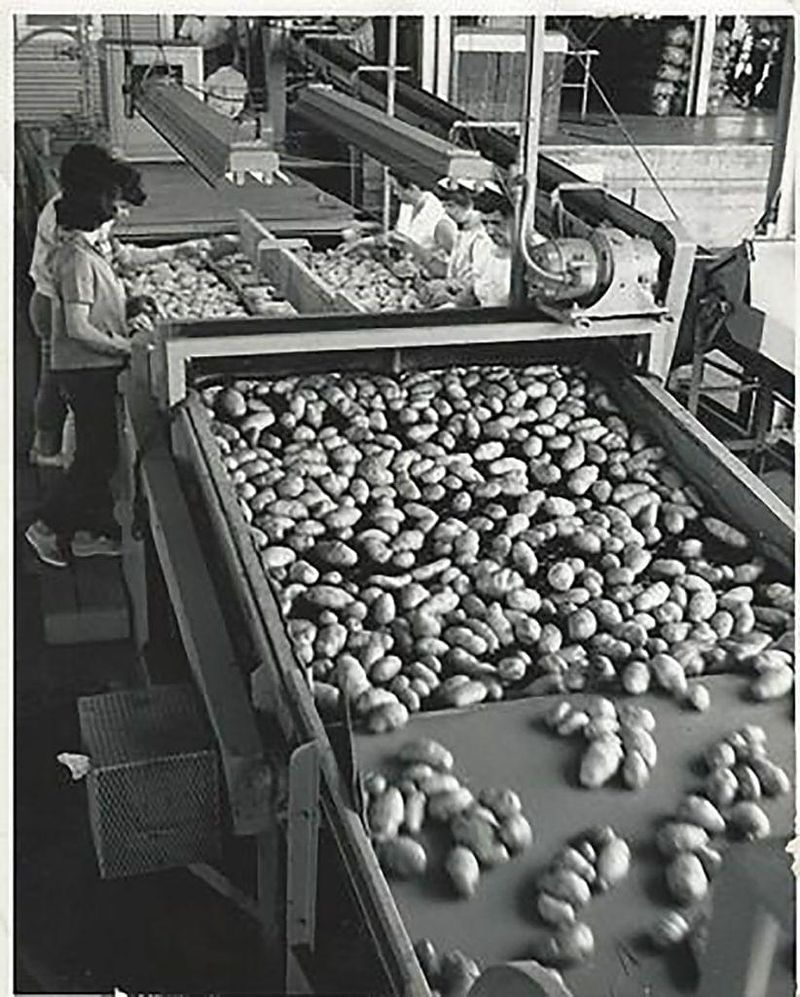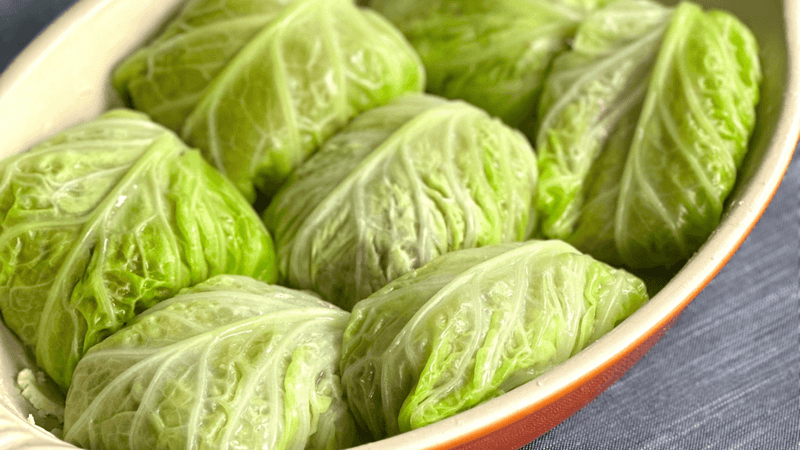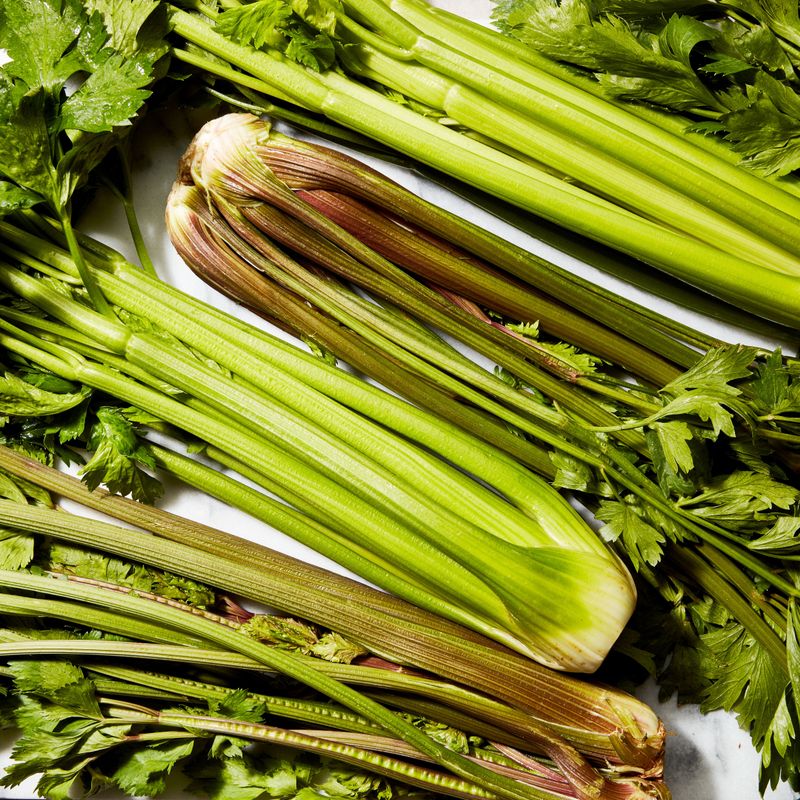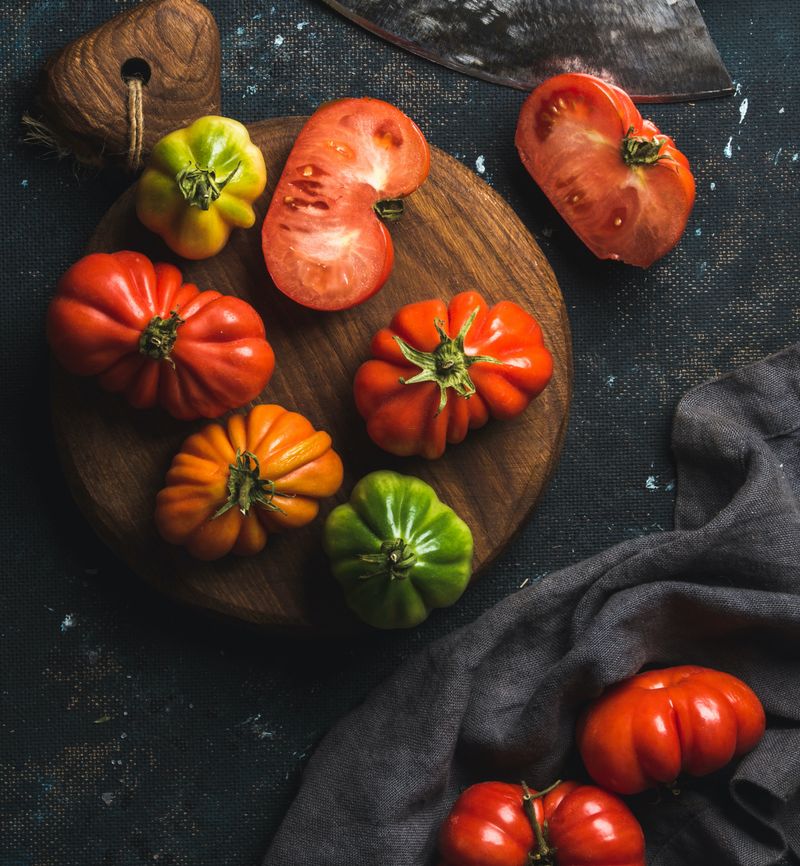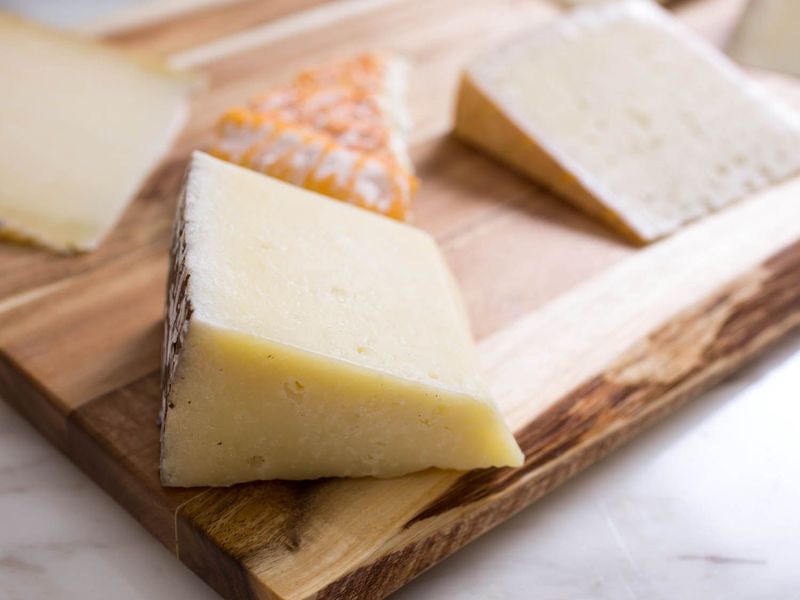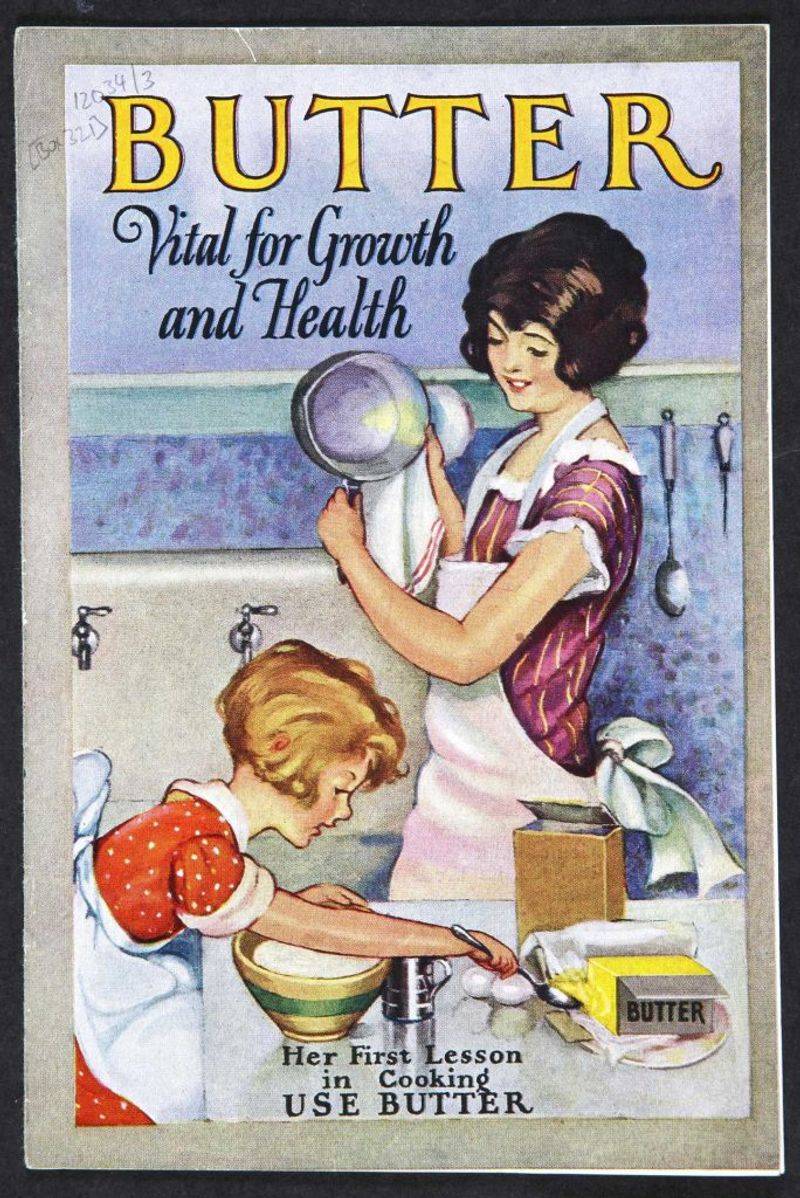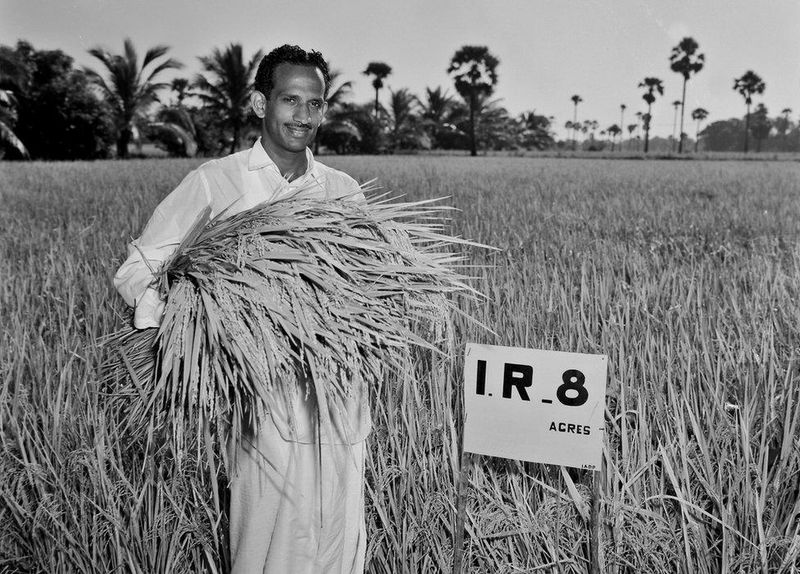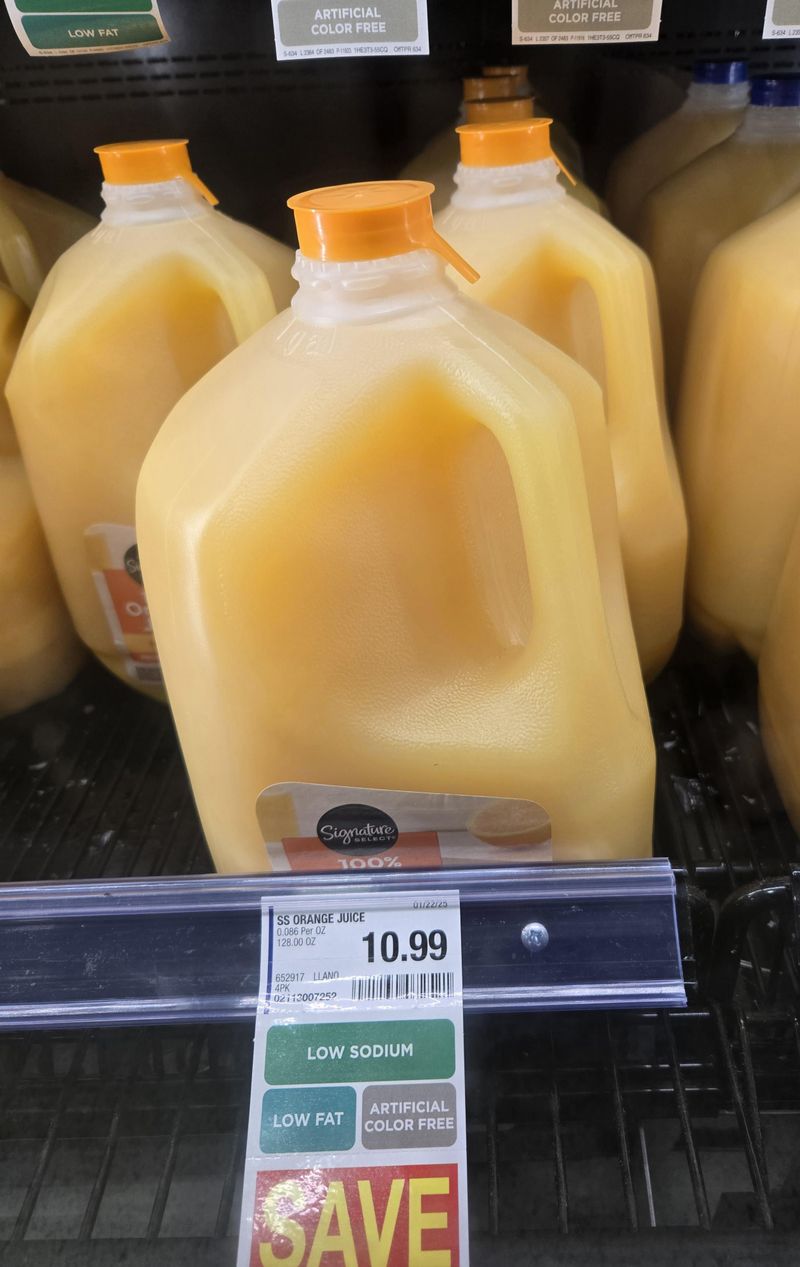Ever dreamt of going back in time and doing your grocery shopping in 1950? Back then, a few dollars could fill a cart. Fast forward to 2025, and prices have skyrocketed—thanks to inflation, supply chain shifts, and changing consumer habits. Here’s a side-by-side look at 23 everyday grocery items and how their prices have changed over the decades.
1. Bread (1 lb)
A slice of history, literally! In 1950, bread was a staple found in every home, costing just $0.12 per pound. Fast forward to 2025, and a loaf now sets you back $3.06—an astonishing 25-fold increase. Bread has been the cornerstone of meals for centuries, evolving through various forms and flavors. Today, it’s not just about white or whole grain; artisanal and specialty breads have taken the spotlight. Yet, the nostalgic aroma of freshly baked bread remains unchanged, tying generations together. This simple necessity reflects broader economic changes, echoing past simplicity with modern complexity.
2. Milk (1 quart)
Creamy and essential, milk has graced breakfast tables across generations. In 1950, a quart of milk cost a mere $0.14. Leap to 2025, and that same quart costs $1.00—a sevenfold increase. Milk’s journey from a simple household staple to a diversified market offering skim, almond, and oat alternatives is remarkable. While the price reflects broader agricultural and logistical changes, the comforting splash over cereal or in coffee continues to start the day right. This liquid gold remains a symbol of nourishment, adapting to dietary trends while maintaining its core appeal.
3. Ground Beef (1 lb)
Juicy burgers and hearty meatloaves owe their existence to ground beef, a staple of American cooking. In 1950, a pound of ground beef cost $0.53, but by 2025, that price has soared to $5.75. This tenfold increase highlights shifts in agricultural practices and consumer preferences. Ground beef’s adaptability in recipes makes it a favorite, whether in classic patties or innovative gourmet dishes. The increase in cost reflects not just inflation but an evolution in taste, with consumers seeking quality cuts and sustainable practices. Ground beef remains a culinary canvas for creativity.
4. Chicken (1 lb)
Once a Sunday special, chicken has become an everyday staple. Back in 1950, a pound of chicken cost just $0.29. By 2025, that same pound will cost $3.50, a twelvefold increase. The rise in popularity of chicken relates to its versatility and perceived health benefits. Whether roasted, grilled, or fried, chicken adapts to countless cuisines and cooking styles. This increase reflects not only inflation but a shift in dietary trends, with consumers seeking leaner protein options. Despite the rise in cost, chicken remains a go-to favorite, providing endless culinary possibilities.
5. Bacon (1 lb)
Crispy, savory, and irresistibly fragrant, bacon continues to seduce the senses. In 1950, a pound of bacon was $0.63. In 2025, it’s $4.62—a sevenfold increase. Bacon’s appeal transcends breakfast, finding its way into salads, desserts, and everything in between. The price hike reflects changes in farming practices and the ever-growing demand for this beloved meat. Bacon has become more than a food; it’s a cultural phenomenon celebrated in festivals and memes. Its enduring popularity proves that some indulgences are timeless, adapting to health trends while never losing their sizzle.
6. Coffee (1 lb)
Awaken your senses with coffee, the brew that fuels mornings and conversations. In 1950, a pound of coffee cost $0.85. By 2025, it reaches $5.00, a sixfold increase. Coffee has evolved from a simple morning ritual to a complex culture of specialty brews and brewing methods. The rise in price reflects global consumption patterns, fair trade practices, and environmental concerns. Coffee remains an emblem of hospitality and innovation, whether enjoyed black or as a frothy latte, continuing its role as a daily companion and a symbol of global connection.
7. Sugar (5 lb)
Sweetening our lives since time immemorial, sugar is indispensable in baking and cooking. In 1950, a 5 lb bag of sugar cost $0.37. Fast forward to 2025, and it costs $3.00—an eightfold increase. Sugar’s journey from a luxury to a pantry staple reflects shifts in agricultural production and consumer habits. While health trends have turned some towards alternatives, sugar remains a key ingredient in countless recipes. Its ability to transform dishes and evoke memories through taste makes it a timeless element in kitchens worldwide, sweetening the ordinary and extraordinary alike.
8. Flour (5 lb)
The backbone of baking, flour has been a kitchen essential for generations. In 1950, a 5 lb bag of flour was priced at $0.30. By 2025, that price has increased to $2.50, marking an eightfold rise. Flour’s versatility is unmatched, forming the base for bread, pastries, and pasta. This price hike reflects broader agricultural trends and the growing popularity of alternative flours. Despite its simplicity, flour remains a foundational ingredient, enabling culinary creativity and experimentation. Its enduring presence in the kitchen speaks to its critical role in both everyday meals and culinary masterpieces.
9. Eggs (1 dozen)
Eggs, versatile and nutritious, have long been a breakfast favorite. In 1950, a dozen eggs cost just $0.60. Fast forward to 2025, and they now cost $5.18. This eightfold jump is a testament to changing farming practices and global demand. Eggs have been at the heart of culinary creativity, from simple scrambles to intricate soufflés. Despite price hikes, they remain a budget-friendly source of protein and inspiration in the kitchen. Each egg represents not just a meal but a potential masterpiece, continuing to crack open possibilities in the culinary world.
10. Oranges (1 lb)
Bursting with vitamin C and vibrant flavor, oranges have been a morning staple for decades. In 1950, a pound of oranges cost just $0.10. By 2025, they command $1.50—a 15-fold increase. Oranges’ popularity as a healthy snack and juice ingredient highlights their nutritional appeal. The price reflects not just inflation but changes in agricultural practices and global demand. Despite the increase, oranges continue to brighten breakfast tables and cocktails alike, offering a zesty reminder of nature’s bounty. Their refreshing taste and health benefits keep them a cherished fruit worldwide.
11. Apples (1 lb)
Crisp and satisfying, apples have graced lunchboxes and pies for generations. In 1950, a pound of apples cost $0.12. Fast forward to 2025, and that same pound costs $1.80—a significant increase. Apples symbolize simplicity and nourishment, yet their price reflects broader agricultural trends and consumer preferences for organic and heirloom varieties. They remain a beloved fruit, celebrated in orchards and festivals. With countless varieties to choose from, apples continue to delight with their versatility and flavor, whether enjoyed fresh or baked into a classic pie—an evergreen favorite.
12. Bananas (1 lb)
Sweet and convenient, bananas are a go-to snack worldwide. In 1950, a pound cost $0.10, but by 2025, it has risen to $0.57. This increase reflects changes in global trade and agricultural practices. Bananas, with their natural packaging and energy-boosting properties, are popular in smoothies and desserts. Their affordability and accessibility make them a staple in many households. Despite the price change, bananas retain their status as a beloved fruit, cherished for their taste and versatility. Whether eaten on the go or as part of a meal, bananas continue to delight.
13. Potatoes (10 lb)
From fries to mashes, potatoes are a culinary chameleon. In 1950, a 10 lb sack cost $0.59. In 2025, it escalates to $5.00. This price increase highlights changes in farming and food production. Potatoes’ versatility makes them a favorite in kitchens worldwide. They’re more than just a side dish, serving as the foundation for comfort foods and gourmet creations alike. Despite the rise in cost, their universal appeal remains unchanged. Potatoes continue to nourish and inspire, showcasing the potential of humble ingredients to transform meals and create culinary memories.
14. Cabbage (1 lb)
Crunchy and versatile, cabbage has been a budget-friendly option for ages. In 1950, it cost $0.06 per pound. Jump to 2025, and the price is $1.00—a 16-fold increase. Cabbage’s adaptability in salads, stews, and stir-fries highlights its culinary appeal. The price change reflects broader agricultural trends and consumer interest in healthy, hearty ingredients. Despite its modest origins, cabbage remains a staple in various cuisines, prized for its nutritional benefits and ability to complement diverse flavors. Its enduring popularity proves that simple ingredients often leave the biggest impact.
15. Carrots (1 lb)
Vibrant and nutritious, carrots have long been a staple in kitchens around the world. In 1950, a pound of carrots cost $0.08. Fast forward to 2025, and the price jumps to $0.92—an 11-fold increase. This change reflects not only inflation but shifts in agricultural practices and consumer preferences. Carrots’ versatility in salads, soups, and snacks makes them a favorite for their flavor and health benefits. Their natural sweetness and crunch appeal to all ages, proving that humble roots can transform dishes and delight taste buds, maintaining their status as a beloved vegetable.
16. Celery (1 lb)
Crisp and refreshing, celery has been a staple in salads and snacks for decades. In 1950, a pound cost $0.14, but by 2025, it spikes to $1.50. This tenfold increase highlights changes in farming techniques and consumer demand for healthy, crunchy ingredients. Celery’s versatility in soups, stews, and dips makes it a kitchen favorite. Its ability to add texture and flavor to dishes is unmatched. Despite the rising cost, celery remains a beloved ingredient, cherished for its refreshing taste and nutritional benefits, proving that some trends are here to stay.
17. Lettuce (1 head)
Fresh and crisp, lettuce has long been the foundation of salads worldwide. In 1950, a head cost $0.19. By 2025, it’s $1.80—a significant rise. This price change reflects shifts in agricultural practices and consumer interest in healthy living. Lettuce’s role as a salad staple is undisputed, offering texture and freshness. Despite alternatives like kale and spinach gaining popularity, lettuce remains a favorite for its mild flavor and adaptability. Its enduring presence on dining tables highlights its versatility and timeless appeal, proving that some classics never go out of style.
18. Tomatoes (1 lb)
Juicy and flavorful, tomatoes are a kitchen essential. In 1950, a pound cost $0.16. By 2025, the price rises to $2.00, reflecting broader agricultural trends and global demand. Tomatoes’ versatility is unmatched, enhancing salads, sauces, and sandwiches with their vibrant taste. This increase highlights the challenges of modern farming and the growing popularity of heirloom varieties. Despite the cost, tomatoes remain a beloved ingredient, cherished for their taste and culinary potential. Their ability to transform dishes and evoke summer memories ensures their place in kitchens worldwide, promising endless possibilities.
19. Canned Soup (10.5 oz)
Convenient and comforting, canned soup has been a pantry staple for generations. In 1950, a 10.5 oz can cost $0.15. Fast forward to 2025, and that can costs $2.00—an impressive 13-fold increase. This price hike reflects changes in production and consumer preferences for quick, easy meals. Despite the rise, canned soup remains a versatile option, offering warmth and nourishment when time is short. Its enduring appeal lies in its convenience and variety, making it a go-to choice for busy households. The evolution of canned soup mirrors broader shifts in dining habits, highlighting its lasting relevance.
20. Cheese (1 lb)
Rich and savory, cheese is a culinary delight that has graced tables for centuries. In 1950, a pound cost $0.50. By 2025, it’s $5.00—a tenfold increase. Cheese’s popularity reflects its versatility in dishes from simple sandwiches to gourmet creations. The price change highlights shifts in production and consumer demand for specialty varieties. Despite the increase, cheese remains a beloved ingredient, cherished for its flavor and texture. Its ability to enhance meals and evoke comfort makes it a timeless addition to kitchens worldwide, embodying culinary tradition and innovation alike.
21. Butter (1 lb)
Smooth and creamy, butter has been a kitchen staple for generations. In 1950, a pound cost $0.70. By 2025, it climbs to $4.00—a more than fivefold increase. This price hike reflects changes in dairy production and consumer preferences for rich flavors. Butter’s versatility in cooking and baking makes it indispensable, adding depth and richness to dishes. Despite health trends, its popularity endures, proving that some tastes never go out of style. Whether spread on toast or used in elaborate recipes, butter continues to delight with its timeless appeal and culinary magic.
22. Rice (1 lb)
Versatile and nourishing, rice has been a global staple for centuries. In 1950, a pound cost $0.19. By 2025, it has risen to $1.50—a significant increase. This price change reflects shifts in global production and consumer demand for diverse varieties. Rice’s role in cuisines worldwide is unmatched, providing sustenance and flavor in countless dishes. Despite the rise, it remains a pantry essential, cherished for its adaptability and nutritional benefits. Whether served as a simple side or a complex main, rice continues to inspire culinary creativity, proving its enduring significance in diets around the world.
23. Orange Juice (32 oz)
Refreshing and invigorating, orange juice has been a breakfast mainstay for generations. In 1950, a 32 oz bottle cost $0.25. By 2025, it skyrockets to $4.94, reflecting broader agricultural and market trends. Orange juice’s popularity highlights its nutritional appeal and ability to start the day right. This price leap underscores shifts in production and consumer preferences for fresh, natural flavors. Despite the cost, orange juice remains a beloved beverage, cherished for its taste and health benefits. Its ability to complement meals and evoke sunny mornings makes it a timeless favorite, promising zest and vitality.
